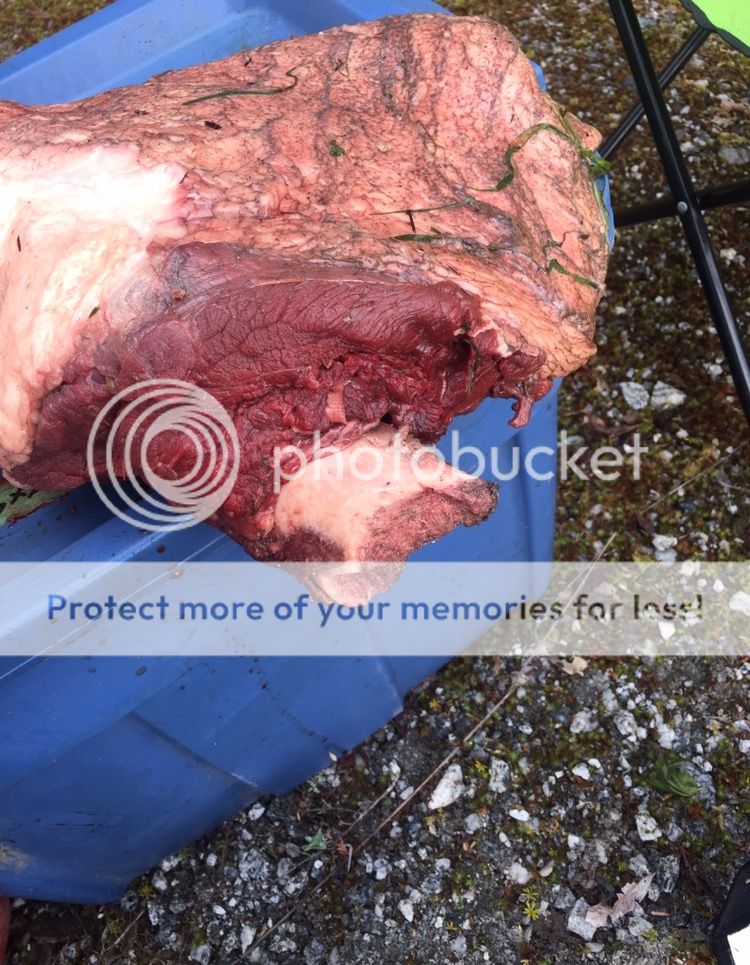What stops a griz Instantly... 12 gauge slug?
375 ruger lol ...
What stops a griz Instantly... 12 gauge slug?
375 ruger lol ...
The last fat bear I dumped was with this. The 525gr. Lyman cast projectile severed the spine behind the skull at a leisurely 1100 fps. @ 30 yds.
View attachment 60650
I suppose the theory on the big heavy 45-70 projectiles is that should you shoot a charging animal, it will hopefully drive a long wound channel through bone and whatever else, causing as much damage and blood loss as possible. There is most likely a good deal of truth to this. Which is why I carry a 450 Marlin with 400 gr Barnes busters for protection. However, I align with Ardent on the hunting angel. I carry a normal fast moving cartridge when hunting, as I shoot through the lungs/heart and want more expansion and wider wound channel and "shock" damage to the vitals. With that said, the only way to guarantee and instant kill on any animal is to destroy the central nervous system, ie. brain or spine. But back to the original poster's question, I don't know what the actual velocity loss is but I can't imagine it would be significant with the 45-70. Would like to know if anyone has the chrony results of a head to head test. Just out of pure curiosity.
sodburner said:What stops a griz Instantly... 12 gauge slug?
As much as I am enamoured with short barreled levers that fling heavy bullets my experience with the 45-70 on game aligns with what Ardent is saying. I had one mule deer doe that took two 405gr JSP's through boiler without much reaction. A third through the shoulders put her down.
Punchy with good penetration, but not a bang flop cartridge. Even more so with hardcast.

Grizzlies were brought up on the first page in the context of .45-70s being the gun to drop them on the spot inside 100 yards, it snowballed from there when the statement raised a couple of our eyebrows. The same applies to all game, Grizzlies have just been the examples here.
Very good points on the .30-30, .303 Savage, and really all the cartridges of the small bore nitro era from the 8x57 on. The same class swept Africa too, they're just far more effective and it's all down to the speed, which comes with other benefits like trajectory.








































